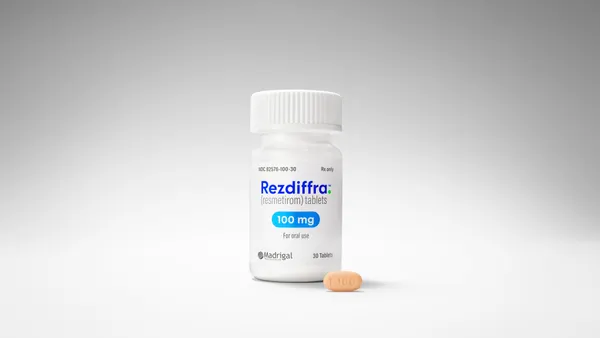“The marketplace was screaming bloody murder for our product, and our competitor was eating our lunch as it tried to gobble up market share with a similar product. I was forced to work around the clock just to stay afloat. I was managing strategic planning for the brand, creating Dear Doctor letters, and handling negative publicity. At the same time, I was working with the advertising agency and creating patient education materials to maintain positive brand awareness.” Jean Mowrey, an award winning sales rep and successful sales training director for a major pharmaceutical company, recalls her introduction to brand management. She was brought in to manage her company’s core product line, which generated million of dollars in revenue. She was immediately responsible for launching two new products; developing a supplemental new drug application; handling two FDA product recalls; and managing a crisis surrounding a major GMP issue, which resulted in a plant shutdown and managing back orders of the company’s flagship product. Many associate product managers can identify with this orientation to their new position. More often than not, brand managers are brought in from the field and are put into positions with very little formal training and expected to generate results in a very short amount of time. Baptism by fire is typical rather than atypical of how pharmaceutical product managers are brought up through the ranks. “I had the benefit of working in the corporate office for four years; I can’t imagine how I would have handled my position had I just come in from the sales field,” Ms. Mowrey says. She is now CEO and president of EmpHigh er Performance Development Inc. “Sales representatives coming in fresh from the field can spend weeks trying to figure out the phone system, corporate operating procedures, and protocol. They are not equipped to deal with crisis.” A STEPPING STONE The lack of formal training for new brand or product managers, according to industry experts, directly correlates to the high turnover of these corporate positions. Product managers traditionally move in from the sales field, stay a year or two in the position, and then move on. Typi cally an entrylevel marketing manager will stay in his or her position anywhere from 18 months to 24 months and then switch to another brand or go back to the sales field. Marketing positions often are thought of as a stepping stone to other positions within the company. Once in a marketing position, the brand manager’s desire is to move on as rapidly as possible. According to Sal Guerriero, president of Wanamaker Educational Services, the goal for product managers is to be able to say that they have checked the “marketing box” and are now ready for something else. A PATH LESS TRAVELED Developing clear career goals and implementing training guidelines at the brand manager level are key to reducing turnover and maintaining product continuity. BY DEBORAHRURIANI Welcome to headquarters. Here’s your office, here’s your phone, everything you need to know is in that file cabinet behind you. I have to catch a plane, so I’ll be back in two weeks, and then we’ll have a chance to talk. TRAINING development “People who want to make a career of mar keting love marketing,” says Phil Deschamps, executive VP, general manager, at Gerbig, Snell/Weisheimer & Associates. “But the sys tem isn’t designed to favor that initiative. Peo ple who go into marketing are looking for a way to round out their skills and grow into an organization. The trick is for the company to point to a career path and show how people can grow and learn different skills in market ing. People generally want to know that they are progressing in their learning curve and will be given broader responsibility and accountability for their job.” Before joining GSW, Mr. Deschamps served as director of nueroscience marketing at Bris tolMyers Squibb Co. According to Mark Soufleris, VP of marketing at NABI, a bio pharmaceutical company, clearly outlining the growth opportunities within the organization — promoting from within — is one way to keep staff continuity. When the time comes to promote one of his people, Mr. Soufleris’ goal is to capitalize on the employee’s strongest skill set. “I try to get my people into marketing research if they are really analytical,” he says. “Or if they have a real knack for sales but want to sell the bigger picture, I can put them in the managedcare area. Or if someone likes to do deals, I can move them into other areas of the company so they can mentor new people coming along.” Marketing is a very demanding profession. Brand managers typically work 15 weekends or more a year preparing for meetings and an average of 50 hours to 60 hours a week. “In the field, a sales rep has much more control of his or her time,” Mr. Deschamps says. “And the pay differential favors the field force, because of incentives and sales bonuses. A brand manager coming in at the associate level will probably experience a cut in pay, at least at the beginning. The major issue, in many pharmaceutical companies, is the lack of a clear career path in marketing.” According to Richard M. Nordstrom, executive VP and chief operating officer, The Corbett Healthcare Group, the industry needs, and can benefit from, the knowledge and capabilities of a strong marketing team — individuals who have decided to invest in a fruitful, enriching career in marketing. “Some of our more enlightened pharma ceutical clients are moving toward this type of commitment,” Mr. Nordstrom says. According to industry experts, turnover within the marketing discipline is probably the singlemost disruptive and immeasurable factor that companies face. Brand continuity and brand knowledge are lost and valuable resources are spent reinventing and revisiting strategies. “Pharmaceutical companies know this is a huge issue, but they don’t know how to quan tify the impact of turnover, and I don’t know if it’s even quantifiable,” Mr. Deschamps says. “The most important thing for companies to do is to recognize that they need to have a transparent career path for marketers, which doesn’t exist in many companies.” FOR BUSINESS SAKE Writing business plans, analyzing market research, and developing budgets are necessary skills for brand managers, but not necessarily part of their resume. MOWREY There is no industry society that focuses on training product managers. Companies have their own internal programs.As a general rule, it’s bring them in,make them swim,or hope they do little or no damage, and then move them out. NORDSTROM For years pharmaceutical companies were sales driven and used the marketing department as a training ground for developing their field salesforce management. It was a stop on the way to a senior sales position and often,product managers didn’t stay in marketing long enough for the brand to achieve a full benefit. 29 PharmaVOICE S e p t e m b e r / O c t o b e r 2 00 1 TRAINING development Typically, associate brand managers review the exist ing business plan, try to fig ure out what went particu larly well the year before, and then add to that activity for the following year. “There is not a zero based approach to pharmaceutical marketing, which is something the industry could really use right now,” Mr. Deschamps says. “Many marketers are saddled with last year’s plan. Believe me, every company that enters into the business planning process wishes and desires that it had a zerobased plan, but the reality is marketers take last year’s plan and add 20% to get to next year’s plan.” Often product managers are not in their position long enough for there to be a true measure of their effectiveness. Companies evaluate brand managers by their ability to plan and their ability to execute, and then measure the results of that planning and exe cution. That business cycle takes at least 18 months to 24 months and ideally companies would like to have two cycles to have a true measurement. “Essentially, companies are not completing the business loop,” Mr. Deschamps says. “This is really killing the indus try and disrupting the market ing process. There never seems to be a measurement of learning of best practices.” In most cases, brand man agers know that by the time they come up for review, they will be in a different position. “Without continuity, com panies basically reiterate medi ocrity,” Mr. Deschamps says. “The associate brand manager has no fundamental marketing expertise or has limited pharmaceutical marketing expertise when it comes time to do the business plan.” Brand managers are not just dealing with the doctor, they are directing their marketing efforts to the doctor, the patient, and man agedcare organizations. They have to contend with directto consumer, medical communica tions, peer opinion programs, journals, medi cal education. “Companies need people with good mar keting skills,” Mr. Guerriero says. “The indus try has evolved to the point where marketing is much more intensive.” Mr. Deschamps agrees: “The industry is going through a fundamental information change in the sources and mediums through which it communicates its messages — to not only physicians, but also to patients.” Pharmaceutical companies recognize that there is a problem and are implementing strategies to train new product managers. Bob Brown, a product manager from a top 20 pharmaceutical company (who wishes to remain anonymous) says within the last few 30 S e p t e m b e r / O c t o b e r 20 01 PharmaVOICE The role of the agency is twofold.The product manager’s job,especially at the associate level,is not to manage people, his or her job is to manage vendors.Vendors play a very important role in educating and helping the associate understand how to get the best out of their vendors. Associates view us as nonthreaten ing, as a way to get a lot of insight,and to make themselves look good within their organization. DESCHAMPS WICKMAN The better the synergy between the agency account person and the client the easier the learning curve is for the new product manager. TRAINING development 32 S e p t e m b e r / O c t o b e r 20 01 PharmaVOICE years the approach to developing product mar keting positions has become a much more for malized process. Mr. Brown came from a salestraining posi tion. He says salestraining departments and marketresearch departments with in compa nies have almost become the minor leagues for product managers. “There are 60 people in our corporate mar keting department and they are divided into three different buckets,” he says. “Onethird came from the sales field, another third from the clinical research group, and the rest came straight out of business school.” Instead of coming straight in from the sales field, sales people are starting to come into headquarters in either a research or salestrain ing capacity and then are promoted to a prod uct manager position. “This stepping stone makes the transition to marketing easier,” Mr. Brown says. “I came in from the sales field, then became a sales trainer, and moved up to manager of the department. I was responsible for creating the marketing tools that the salesforce uses. I think this shortens the learning curve.” For smaller companies, the challenge is greater to provide structured training. NABI has changed the way it views the marketing discipline and the training of its managers thanks to Mr. Soufleris. “When I joined the company four years ago, I wasn’t thinking about training product managers, I just wanted to get my arms around the business and focus on the product launch of Autoplex,” Mr. Soufleris says. Mr. Soufleris soon learned his marketing team consisted of two product managers who had no product marketing experience and company executives who believed that prod uct managers were just promotion managers. “Within four years we had grown from marketing one product to four — some of which were outside our area of expertise,” he says. “We also increased our sales staff from six to 45. To complicate things, our product man agers were constantly changing. We had a product manager move back into the field, and one move out of the company. I had to think about putting together a training pro gram to eliminate the disruption to our brands.” Relying on his early training with Bristol Myers Squibb, Mr. Soufleris put together a fact book on each of NABI’s products. He cre ated a formal orientation and training pro gram for his brand managers. The program consists of a month of orientation with depart ment heads. New product managers have intense oneonone sessions with department heads in regulatory, sales, and market research. “Once product managers get their feet wet and have been doing the daytoday function for about six months, we send them to a two weeklong management seminar outside the company,” Mr. Soufleris says. But training is not enough in terms of keeping the historical knowledge of the brand in house. Mr. Soufleris wants his product man agers to stay and knows he has to work to cre ate incentives through titles and pay increases. “Product managers spend the first year fig uring out the job,” he says. “The next year they get it, and by year three, they have mas tered the position and are ready for a promo tion or a switch to another product. This is the challenge. I need to show my managers that there is potential for growth and that they can become senior product managers.” Mr. Guerriero says providing incentives is a big part of the “training” solution. “The pyra mid gets much tighter inside the organiza tion,” he says. “There are more growth oppor tunities outside the sales organization. Companies need to get good people in mar keting, train them, keep them, and provide opportunities so the institutional knowledge of the brand does not get lost. The company that can figure this out the best is going to wind up with solid marketing people.” For example, Eli Lilly & Co. is making a robust effort at not only creating a marketing career path but also investing in training its BRAND INTERDEPENDENCY MODEL What every brand manager should know Source:Wanamaker Educational Services The Brand Interdependency Model is a tool to assist brand managers in conceptualizing the true nonlinear and multidimensional nature of marketing. Imagine each layer spinning so that it creates 120 permutations. One must consider all of the permutations before a strategy is locked down.Trying to get marketers to think long term,with the end strategy in mind, is the purpose of the brand interdependency model. GUERRIERO Companies need people with good marketing skills.The industry has evolved to the point where marketing is much more intensive. TRAINING development associates and brand managers to give them marketing knowhow. According to Ms. Mowrey, Merck & Co., is another company that is implementing train ing programs for its product managers to pre pare them for their positions. OUTSIDE SOLUTIONS Companies realize they need to train better, and are responding by outsourcing their train ing needs by bringing in consultants or tap ping into their healthcare advertising agency partners. Mr. Brown says his company uses outside consultants for mentoring and coaching and has a contract with three large universities, where product managers are required to take a series of marketing courses within their first 18 months. “We also have a staff college, an internal education program that was developed over the past three years,” he says. “Every other week we have visiting marketing professors come in and lecture and our people are required to attend those sessions.” Wanamaker Educational Services provides training programs for three maj r pharmaceu tical companies. “I have created programs that can take three days to 15 days,” Mr. Guerriero says. “These are not lectureoriented pro grams. I create a fictional company and prod uct and then take the manager through drug development, strategy development, and tac tical execution, all the way to directtocon sumer advertising — basically through the life cycle of the brand. The programs are cus tomized to the client’s needs. We partner with several advertising agencies and a lot of the training is done at the agencies so the experi ence is very real.” These handson programs have become part of some of his clients’ routine training programs for product managers and others who are involved with the marketing of the product. Companies also rely on their healthcare advertising agencies to mentor and train their new brand managers. “Quite frankly, agencies that specialize in bringing clientside expertise or pharmaside expertise can help; we are often the continuity for these brands,” Mr. Deschamps says. “In the three years that I’ve been at GSW, I’ve worked with three different brand leaders. I am prob ably the senior most continuous member of the brand team.” But, even the best marketing training pro gram is never going to be as good as actually sitting down and doing the job. “The insight that the agencies have, whether they be advertising agencies or other types of vendors, into the daytoday running of a brand, is an education that’s completely different and complementary to the training and theories that a pharmaceutical company might provide to its associate brand or prod uct managers,” Mr. Deschamps says. Agencies maintain files on competitive activity, market data, and past initiatives for a brand. Many times the point person on the agency’s account management team is the best person to give the new product manager infor mation about the brand. “Looking over the various research activi ties and promotional/medical education pro grams enables the new product manager to overcome the `learning curve’ faster,” says Kathleen Wickman, senior VP, at Catalyst Communications. According to Ms. Wickman, the agency is a smart business source especially when the account management team has been consis tent and the product manager has changed. “The relationships that work best in this regard are those where the agency and the pharmaceutical company have a strategic part nership,” Ms. Wickman says. The assistance of an agency in helping new product managers acclimate to their new role is directly related to the involvement of the agency with the brand team — from strategic input to program development. “The more actively involved the agency account team is with the product team, the better the agency can assist with communica tions to the new product manager in under standing the agency interface part of the job,” Ms. Wickman says. Similar to other healthcare advertising agencies, Catalyst offers new product man agers a day at the agency as part of its involve ment in product management development. This is an intensive day of handson learning centered around the clientagency process. Also open to clients is Catalyst University, a monthly seminar series featuring industry leaders. Corbett is enlightening it clients to believe that individuals trained in marketing are much more efficient and productive. “If they have staff members who came from the field salesforce, clients can turn to us to help augment their staff’s marketing capabili ties,” Mr. Nordstrom says. “Like other adver tising agencies, for years we have oriented our clients to our strategic process and reviewed the communication development process. But most recently, we have begun to offer clients a much more comprehensive training and development program designed to augment the abilities of their brand management team. While some advertising companies may offer this service at a cost, we provide it to our clients for free. “We’ve been told that what we do is high ly unusual for our industry,” Mr. Nordstrom says. “So be it. We believe that marketing is not just about understanding the process, it’s about developing a skill set in strategic capa bilities. This all translates to a deeper relation ship with our clients.”F PharmaVoice welcomes comments about this article. Email us at [email protected]. 33 PharmaVOICE S e p t e m b e r / O c t o b e r 20 01 PHIL DESCHAMPS. Executive VP,gener al manager,Gerbig,Snell/Weisheimer & Associates Inc., Westerville, Ohio; Gerbig, Snell/Weisheimer & Associates is the healthcare advertising unit of inChord Communications Inc. (Before joining GSW,Mr.Deschamps served as director of neuroscience marketing at Bristol Myers Squibb Co.) SAL GUERRIERO.President,Wanamaker Educational Services,Norristown, Pa.; Wanamaker Educational Services, is a division of Wanamaker Associates, which delivers marketing training solutions to pharmaceutical companies. (Mr.Guerriero teaches pharmaceutical marketing as part of St. Joseph Universi ty’s Executive MBA program. Before joining Wanamaker,he was an internal solutions leader at AstraZeneca.) JEAN MOWREY. President and CEO, EmpHigher Performance Develop ment,Yardley, Pa.; EmpHigher Performance specializes in sales performance consulting, keynote speaking, and sales training for the biopharmaceutical industry RICHARD M.NORDSTROM.Executive VP,chief operating officer, The Corbett Healthcare Group and Corbett Worldwide Healthcare Communica tions,Chicago; Corbett is a healthcare advertising agency MARKSOUFLERIS.VP Marketing,NABI, Boca Raton, Fla.; Nabi is a biopharma ceutical company KATHLEENWICKMAN. Senior VP, Catalyst Communications Inc., South Plainfield, N.J.; Catalyst is a healthcare advertising agency Experts on this topic
An article from











